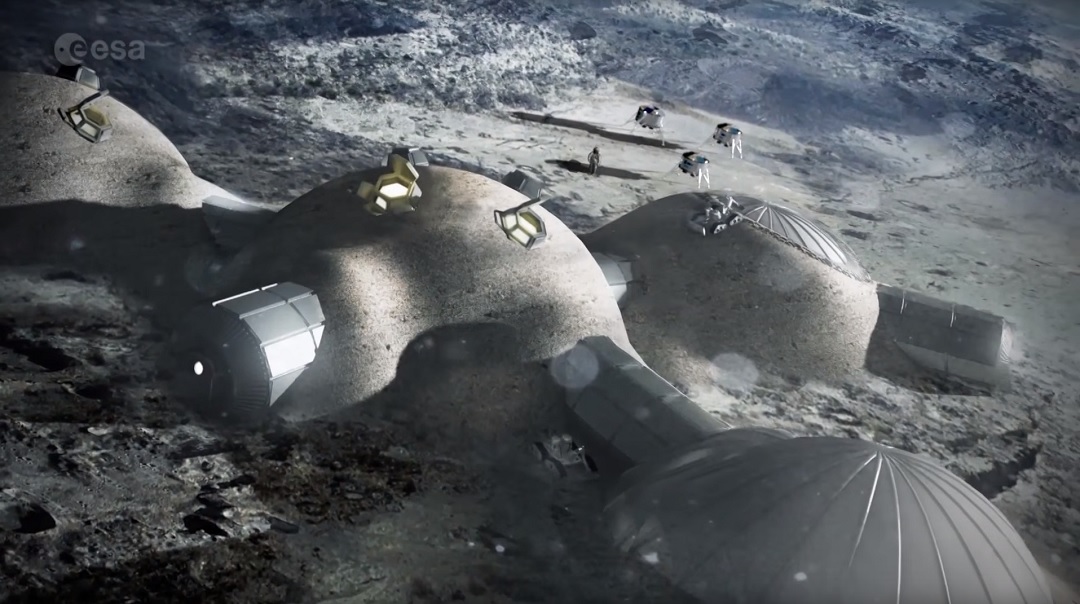While covering the 47th Lunar and Planetary Science Conference in The Woodlands, Texas last month, I wrote several pieces on various happenings and findings in and about our solar system. Here are a few snippets of pieces that resulted, published by mental_floss. (And let me just add that if you've never had to explain nuclear spectroscopy for a general readership, you just haven't lived yet.)
Every Inch of Ceres Is Now Mapped—and Yet Mysteries Remain
Dawn is loaded with delicate instruments to help decipher the dwarf planet's secrets. The Gamma Ray and Neutron Detector (GRaND) maps elements on the asteroid so that scientists can make sense of the surface and processes at work. The instrument works like this. Galactic cosmic rays smack into the regolith (the loose surface layer; on Earth, think: dirt), and interactions with the surface lead to emissions of neutrons and gamma rays. GRaND detects these emissions as they bounce into space. Neutrons at different energy levels correspond to different surface elements.
During the regolith interaction, when the cosmic rays hit the nucleus of an atom, the nucleus explodes, sending neutrons and protons in all directions. Some neutrons escape the regolith, some smash into other nuclei. Here's where it gets interesting. If a neutron hits the nucleus of a hydrogen atom, it loses energy in the interaction, similar to the way a cue ball stops when it hits another ball in a game of pool. When GRaND is counting neutrons, therefore, lower numbers suggest more hydrogen.
That's what is shown on the above map [not pictured in this blog snippet—dwb], which is color-coded for the presence of hydrogen. (Blue is more; red is less.) The area in blue is the north pole of Ceres, and as the map reveals, it's teeming with hydrogen, relatively speaking. This indicates the presence of water ice—H2O—near the dwarf planet’s surface. This is the first time such ice has been detected, and the finding is consistent with longstanding scientific predictions. Planetary scientists will continue analyzing the data collected by GRaND and other instruments in order to better understand the origin and evolution of Ceres.
5 Space Missions Under NASA Consideration
You have to admire the effort it took to build the acronym VERITAS, which is short for Venus Emissivity, Radio Science, InSAR, Topography, and Spectroscopy. VERITAS is a proposed mission to visit Venus and figure out where things went so wrong. Above the clouds, Venus is far more hospitable to humans than Mars. Its temperature and weather aren't all that different from Earth, and scientists have proposed colonizing Venus with a series of airships. Below the clouds, however, Venus is a living hell. With surface temperatures near 900°F, it's hotter than Mercury, and its south pole is consumed by a rapacious, undying superstorm. The questions VERITAS intends to answer involve the state of Venus's geologic activity; its tectonic characteristics in comparison to Earth; and the evidence of past water at its surface.
[Blog note: My favorite line in the piece was cut, and I'll share it here: "Venus is the place where people in hell are afraid they'll go when the die."]
What is an Ice Volcano?
Think back to the volcano diorama you made in grade school. Little mountain, maybe trees and plastic dinosaurs (because every grade school project is improved with dinosaurs). In our model, red food coloring, baking soda, and vinegar are meant to simulate what's going on when a volcano erupts. Magma, which is molten rock and volatiles, builds up pressure until the ground gives way and it spews forth from vents in the Earth's surface.
This sometimes looks like the occasional, seemingly apocalyptic eruptions of Volcán de Colima in Mexico. Sometimes it looks like the gentle flows in the Pacific islands where you can hire a tour guide and observe lava streams as they roll along.
A cryovolcano isn't all that different. Like an Earth volcano, it results from pressure beneath a celestial surface. Rather than molten rock, however cryovolcanoes are the eruptions of molten ice, sometimes called cryomagma. Ice volcanoes can erupt violently or flow gently, just like the volcanoes on Earth. The gentle "tour guide" eruptions are believed to be like flowing slurries.
[Blog note: Bring tequila, triple sec, salt, and a bag of limes and you can throw the best rita party on Pluto.]
The Tropics of Pluto
“Pluto is a very complicated place,” said Richard Binzel, a professor at MIT and a co-investigator of the New Horizons mission. “We’ve been trying to go back to basics to see how seasons and climate might be shaping Pluto.”
Scientists have worked out the location and nature of Pluto’s tropics—a concept that might seem unlikely on a frozen planet 6 billion kilometers from the Sun. To understand what “tropics” means in this context, consider the axial tilt of the Earth, which is 23.5 degrees. The tilt is the reason that our planet experiences seasons, and over the course of a year, the Sun is directly over one of any latitude between the Tropic of Cancer (23.5 degrees north) and the Tropic of Capricorn (23.5 degrees south). That’s why the tropics are known for their warm weather.
For comparison, Pluto’s axial tilt is 120 degrees. This makes the range of tropical latitudes much broader than Earth's... Moreover, just as the axial tilt of the Earth gives us arctic circles with their attending stretches of dark winter or midnight Sun, Pluto's extreme tilt creates arctic circles as well—circles that reach nearly to its equator. “If Earth were tilted by same amount as Pluto, we [in Texas] would be in the arctic zone on Earth," Binzel said. A result of the overlapping arctic and tropical zones is that Pluto actually has "tropical arctic" bands.
The Plan to Send a Submarine to Titan, Saturn's Largest Moon
Here is an actual problem that scientists have tackled, not as consultants for some sure-fire science fiction blockbuster, but rather, in order to put together a very real NASA mission: How do we launch a submarine into space, send it to another world, and drop it into an extraterrestrial lake?
As it turns out, a lot of work on the problem has already been done. The traditional shape of a submarine doesn't lend itself to the classic entry shell seen previously with the Mars landers. The Titan submarine team soon realized, however, that the submarine would fit quite nicely inside the cargo bay of a scaled-down space shuttle. Better still, DARPA—the Defense Advanced Research Projects Agency—has already built a scaled-down space shuttle, and it's flying today. It is called the X-37B—and the submarine would fit inside it.
The entry velocities for a mission to Titan would be the same as Earth orbital velocities, something the X-37B and its thermal protection can already handle. ("For [this phase of] the study, we just said, 'Sure, we could make that work,'" Lorenz explained at the forum.) Such an entry vehicle would be especially useful in that it could fly to a designated spot without dealing with the winds and consequent uncertainties that a typical parachute descent entry would have to overcome.
Next, the Titan team considered extracting the submarine from the back of the vehicle, much in the same way the U.S. Air Force pushes a MOAB from a C-130. They also looked at ditching tests conducted by NASA in the event that the space shuttle would ever have to land on water. A splashdown on Titan of their spacecraft, they found, would be quite forgiving, and if they attempted such a landing, they could simply flood the entry vehicle, let it sink, open the back, and let the submarine swim out into the sea. From there, the vehicle would conduct preliminary sea trials to discern maneuverability, and then get underway.
[Blog note: Ralph Lorenz, the project scientist on the mission study, had a magnificent quote that's elsewhere in the piece, but that I wanted to share here: "The virtue of this study is that you just need to say those words—Titan submarine—and everyone kind of gets that it's out there, it's interesting, and there's a lot of exciting potential."]














